The story of Mary Ann Bevan, who was considered ‘The ugliest woman in the world,’ starts in the 19th century, a dark period of the American culture when ‘freak shows,’ traveling circuses showing people with certain deformities and disabilities, were at the peak of their popularity.
Today, it is highly unacceptable to treat people with disabilities with disrespect, but back in the day, no one believed it was morally wrong to dub them freaks.
Mary Ann Bevan was born on December 20, 1874, in Plaistow, East London, United Kingdom. She grew up to become a nurse and was respected by the society. On top of that, she was a very attractive woman who was offered many possibilities.
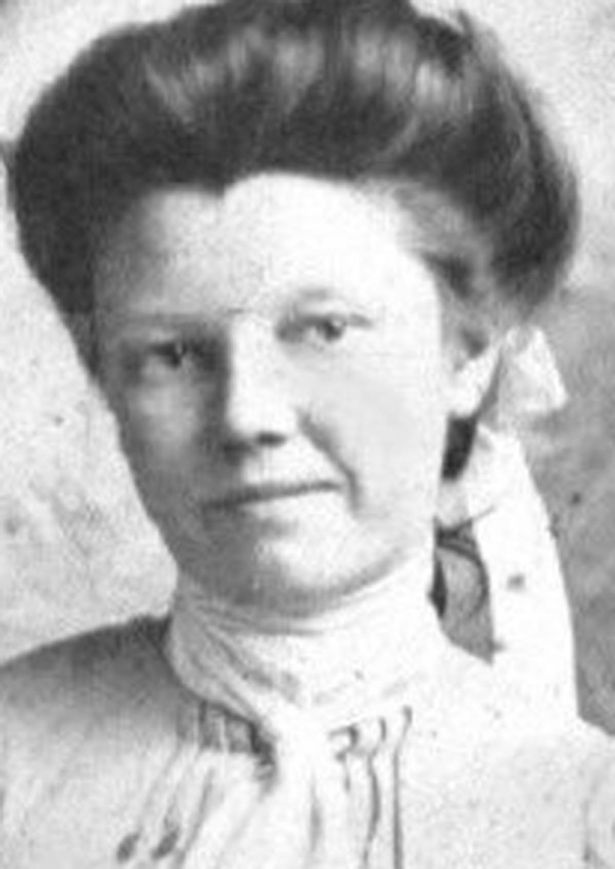
In 1902, Mary met the love of her life, a man named Thomas Bevan. The two married and welcomed four children together, but their happiness didn’t last long. After 14 years, Thomas passed away, leaving Mary heartbroken.
Her life became difficult as she was left to take care and provide for her children all by herself.
Unfortunately, around the time she turned 32, Mary started experiencing strange symptoms. Her face started changing gradually and she didn’t know what was happening or what caused that change which impacted her both psychologically and financially. Mary’s bones grew big, and her face became deformed. As a result, she lost her job and was unable to provide for her children any longer.
Back in the day, no one could diagnose her, but this poor woman suffered from acromegaly, a hormonal disorder that develops when the pituitary gland produces too much growth hormone during adulthood, when a change in height doesn’t occur. Instead, the increase in bone size is limited to the bones of the hands, feet and face.
Today, a lot more is knows about this condition and there are ways to keep it under control, which wasn’t the case during the time Mary lived.
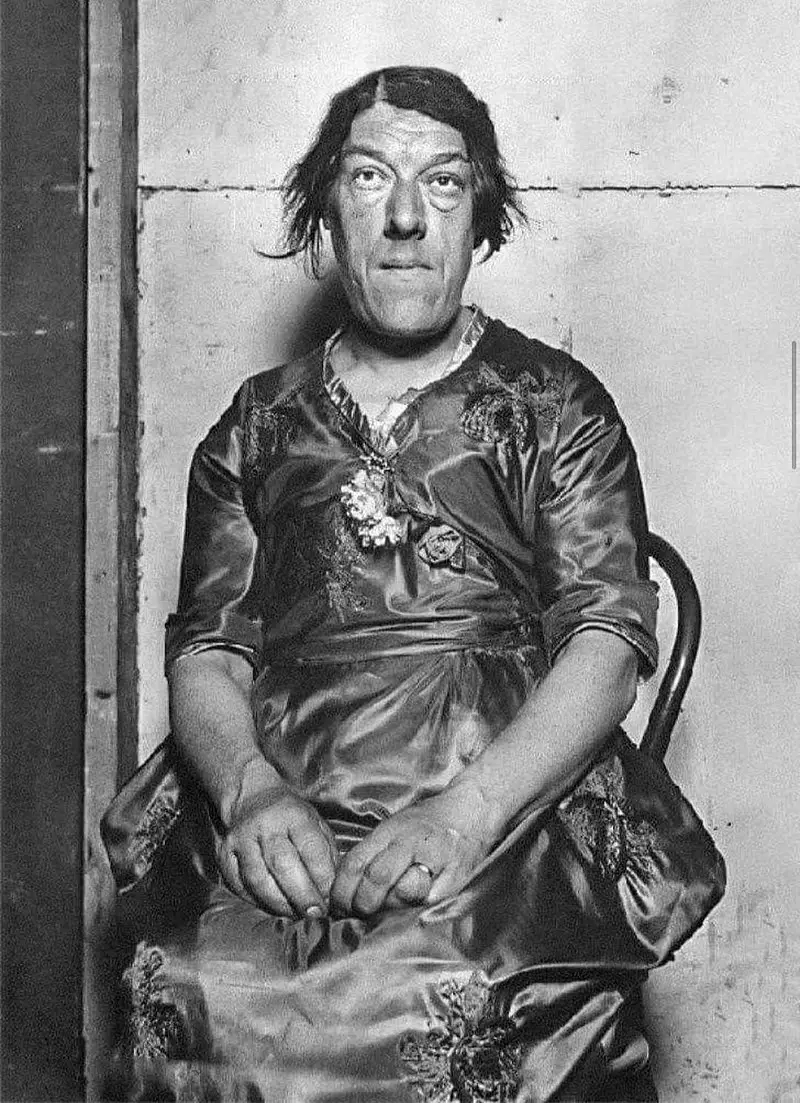
Crushed, heartbroken, and poor, this woman saw an ad one day which read, “Wanted: Ugliest woman. Nothing repulsive, maimed or disfigured. Good pay guaranteed, and long engagement for successful applicant. Send recent photograph.”
No matter how awful she felt about this ‘job,’ she saw no way out of her situation. She simply needed to do anything in order to feed her children. Above all, she was a mother.
Mary answered the ad and she was soon contacted by the circus’ agent, a man named Claude Bartram, who later shared Mary’s story.
“She was not repulsive at all. She had the kind of face one usually finds in a giant, a powerful, masculine jaw, prominent cheek-bones, nose and forehead, but she was unblemished, healthy and strong. She told me she did not like the idea of placing herself on exhibition, she was shy and did not want to be separated from her children,” Bartram said, according to Daily Star.
“I told her she would earn £10 per week for a year, travelling expenses and all the money from the sale of picture postcards of herself, so she could provide for the education of her children.”
https://www.facebook.com/plugins/post.php?href=https%3A%2F%2Fwww.facebook.com%2Fphoto.php%3Ffbid%3D637154017772048%26set%3Da.202975904523197%26type%3D3&show_text=true&width=500
In no time, magazines were filled with Mary Ann’s photos and everyone recognized her as ‘the ugliest woman on Earth.’
Her popularity brought her to the Dreamland Circus in Coney Island, New York, one of the most famous circuses there were. Mary Ann became an attraction, but then a doctor named Harvey Cushing, a leading neurosurgeon, spotted her and knew there was more behind ger huge face that he wanted to explore thoroughly.
“This unfortunate woman who sits in the sideshow of Ringling Brothers ‘between Fat Lady and Armless Wonder’ and ‘affects white lace hats, woollen mittens and high laced shoes’ has a story which is far from mirth-provoking.
“She, previously a vigorous and good-looking young woman, has become the victim of a disease known as acromegaly,” he wrote in a letter to Time magazine.
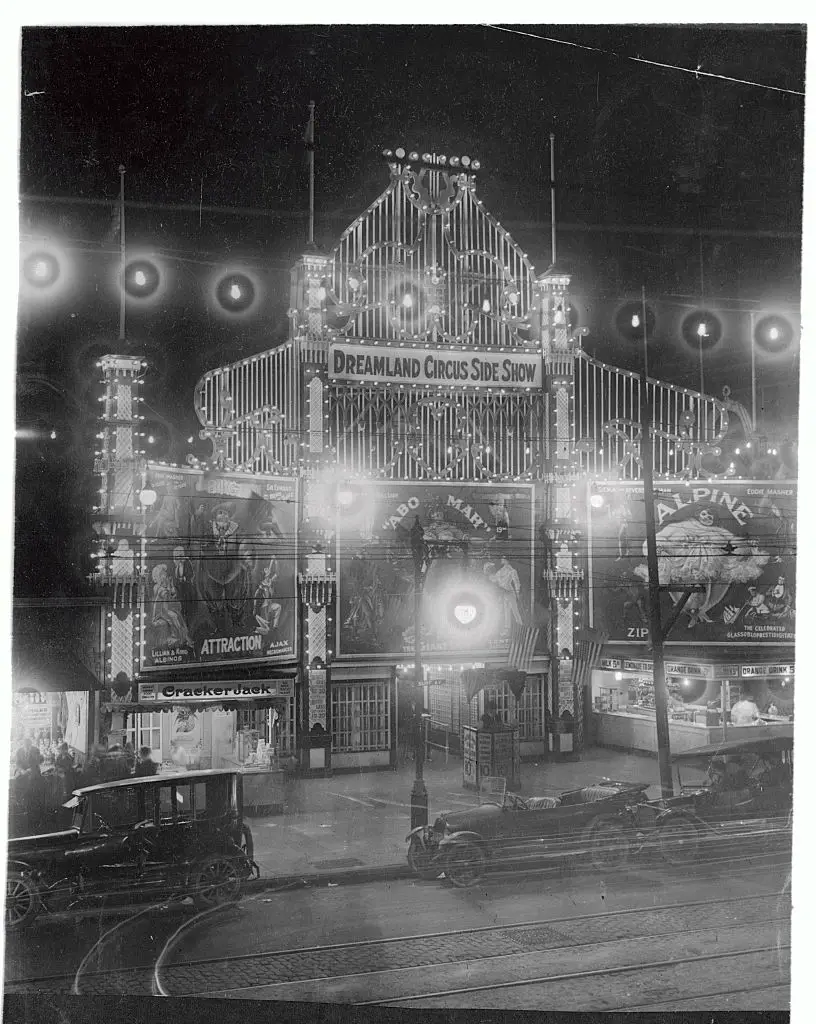
Mary Ann spent her life working at the circus and she was reported to have earned a small fortune which enabled her to send her children back to England where they attended boarding schools.
She endured a lot, but she did it all for her children.
Mary Ann died at the age of 59 of natural causes. Her final wish was to be buried in her homeland, England, and her children fulfilled her wish. She is resting at the Ladywell and Brockley Cemetery in South London.
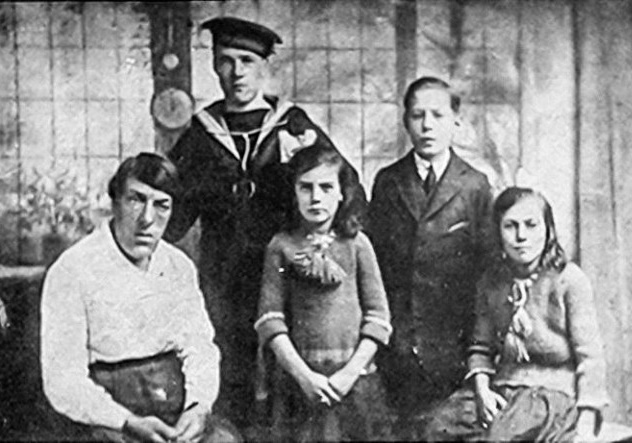
This woman’s sad, yet fascinating life story speaks of the mother’s love for her children more than anything else.
Um estranho sentou-se ao meu lado enquanto meu marido moribundo estava no hospital e me disse para colocar uma câmera escondida em sua enfermaria para descobrir uma verdade

Diana estava se preparando dolorosamente para dizer adeus ao marido moribundo no hospital. Enquanto ela lutava para processar que ele tinha apenas algumas semanas de vida, um estranho se aproximou e sussurrou as palavras chocantes: “Instale uma câmera escondida na enfermaria dele… você merece saber a verdade.”
Nunca pensei que meu mundo acabaria em um corredor de hospital. As palavras do médico ecoaram em meu crânio como um toque de finados: “Câncer em estágio quatro… metastatizado… ele tem algumas semanas de vida.”
O diagnóstico destruiu o futuro que eu havia planejado com Eric. Quinze anos de casamento reduzidos a um punhado de dias. A aliança dourada no meu dedo pareceu de repente pesada, carregada de memórias de tempos melhores: nossa primeira dança, cafés da manhã compartilhados em silêncio confortável e o jeito como ele acariciava meu cabelo quando eu estava triste.

Uma mulher de coração partido em pé em uma enfermaria de hospital | Fonte: Midjourney
Meu estômago se revirou enquanto eu observava outras famílias passando. Algumas choravam, outras riam, e algumas estavam congeladas naquele limbo peculiar entre esperança e desespero. Eu sabia que tinha que sair antes que eu me despedaçasse completamente.
Eu tropecei através das portas automáticas, o ar do final de setembro batendo em meu rosto como um tapa suave. Minhas pernas me levaram até um banco perto da entrada, onde eu desabei mais do que sentei. O sol da tarde lançava sombras longas e distorcidas sobre o terreno do hospital, espelhando a agonia em meu coração.
Foi então que ela apareceu.

Uma mulher triste sentada no corredor de um hospital | Fonte: Midjourney
Ela não era notável à primeira vista. Apenas uma enfermeira comum, com quase 40 anos, vestindo uniforme azul-marinho, com olhos cansados que continham algo.
Seu cabelo com mechas prateadas estava preso em um coque, e seus sapatos eram do tipo sensato usado por alguém que passava longas horas em pé. Ela sentou ao meu lado sem pedir, sua presença intrusiva e estranhamente calmante.
“Instale uma câmera escondida na enfermaria dele”, ela sussurrou. “Ele não está morrendo.”
As palavras me atingiram como água gelada. “Desculpe-me? Meu marido está morrendo. Os médicos confirmaram. Como você ousa—”

Uma enfermeira sentada em uma cadeira | Fonte: Midjourney
“Ver é crer.” Ela se virou para me encarar completamente. “Eu trabalho à noite aqui. Eu vejo coisas. Coisas que não batem. Confie em mim… você merece saber a verdade.”
Antes que eu pudesse responder, ela se levantou e foi embora, desaparecendo pelas portas do hospital como um fantasma, deixando-me apenas com perguntas.
Naquela noite, fiquei acordado na cama, minha mente acelerada. As palavras do estranho se repetiam, competindo com as memórias do dia do diagnóstico de Eric. Como ele agarrou minha mão quando o médico deu a notícia, e como seu rosto se enrugou em desespero.

Uma mulher confusa segurando a cabeça | Fonte: Midjourney
O que ela quis dizer com “Ele não está morrendo”? O pensamento parecia impossível, mas aquela centelha de dúvida não morria. Pela manhã, eu tinha encomendado uma pequena câmera online com entrega durante a noite, minhas mãos tremendo enquanto eu digitava as informações do meu cartão de crédito.
Entrei no quarto dele enquanto Eric fazia seu exame de rotina no dia seguinte.
Minhas mãos tremiam enquanto eu posicionava a pequena câmera entre as rosas e lírios no vaso no parapeito da janela. Cada movimento parecia uma traição, mas algo mais profundo me empurrava para frente.
“Sinto muito”, sussurrei, embora não tivesse certeza se estava me desculpando com Eric ou comigo mesma.

Uma mulher escondendo uma pequena câmera em um vaso de flores | Fonte: Midjourney
Uma hora depois, Eric estava de volta na cama, parecendo pálido e abatido. Sua camisola de hospital o fazia parecer menor de alguma forma, e mais vulnerável. “Onde você estava?”, ele perguntou fracamente.
“Só vou tomar um café”, menti. “Como foi o exame?”
Ele estremeceu enquanto se mexia na cama, os lençóis farfalhando suavemente. “Exaustivo. A dor está piorando. Só preciso descansar.”
Eu assenti, apertando sua mão. “Claro. Vou deixar você dormir.”

Um homem deitado em uma cama de hospital | Fonte: Midjourney
Naquela noite, depois de me certificar de que Eric estava acomodado para a noite, fui para casa e sentei na minha cama. O brilho azul do laptop iluminou meu rosto enquanto eu acessava o feed da câmera, meu coração batendo tão forte que eu podia senti-lo na garganta.
Por horas, nada aconteceu. Eric dormia, enfermeiras vinham e iam, e eu comecei a me sentir tola por ouvir um estranho.
Então, às 21h, tudo mudou.
A porta da enfermaria se abriu, e uma mulher entrou. Ela era alta, confiante e usava um casaco de couro elegante. Seu cabelo escuro perfeitamente penteado refletiu a luz quando ela se aproximou da cama de Eric, e o que aconteceu em seguida fez meu sangue gelar.
Eric, meu suposto marido “MORRENDO”, sentou-se ereto. Sem luta. Sem dor. Ele parecia feliz. O tipo de felicidade que parecia deslocada no rosto de um homem moribundo.

Uma mulher em uma enfermaria de hospital | Fonte: Midjourney
Ele balançou as pernas para o lado da cama e se levantou, puxando-a para um abraço que parecia tudo menos fraco. Quando eles se beijaram, senti minha aliança queimar contra meu dedo como uma picada dolorosa.
Meu coração se partiu enquanto os observava conversando. Embora a câmera não tenha captado o áudio, sua linguagem corporal era íntima e familiar.
Ela entregou a ele alguns papéis, que ele cuidadosamente enfiou debaixo do colchão. Eles pareciam estar planejando algo grande, e eu precisava saber o quê.

Um homem sorridente segurando documentos | Fonte: Midjourney
Na manhã seguinte, voltei para o quarto de Eric, meu coração pesado com o segredo que eu não deveria saber. Ele estava de volta ao personagem — pálido, fraco, lutando para se sentar.
“Bom dia, querida”, ele disse asperamente, pegando o copo de água com as mãos trêmulas. “Noite ruim. A dor… está piorando.”
Eu queria gritar e segurá-lo pelo colarinho para obter respostas. Em vez disso, sorri, a expressão parecia vidro quebrado no meu rosto. “Sinto muito em ouvir isso. Posso fazer alguma coisa?”
Ele balançou a cabeça, e eu o observei desempenhar seu papel perfeitamente. Quantas vezes eu chorei até dormir acreditando nesse ato? Quantas noites eu rezei por um milagre enquanto ele provavelmente estava planejando algo com sua amante secreta?

Uma mulher atordoada | Fonte: Midjourney
Não fui para casa naquela noite. Escondido no estacionamento, esperei, meu telefone pronto para registrar a verdade. Eu sabia que sua amante viria visitá-lo.
Com certeza, a mulher do casaco de couro apareceu, andando pelo hospital com a confiança de alguém que pertencia àquele lugar.
Dessa vez, eu a segui silenciosamente, mantendo-me perto o suficiente para ouvir.
Suas vozes passaram pela porta parcialmente aberta da enfermaria. “Está tudo arranjado”, ela disse, seu tom profissional. “Assim que você for declarado morto, o dinheiro do seguro será transferido para o exterior. Podemos começar nossa nova vida.”

Uma mulher alegre em uma enfermaria de hospital | Fonte: Midjourney
A resposta de Eric foi ansiosa e encantada. “Isso é incrível, Victoria. O Dr. Matthews fez isso perfeitamente. Custou-me uma fortuna fazê-lo falsificar o diagnóstico, mas valeu a pena. Mais alguns dias dessa encenação e estamos livres. Diana não vai suspeitar de nada. Ela já está planejando meu funeral.”
“A viúva de luto cujo marido está bem vivo!” Victoria riu baixinho.
“Você deveria ter visto a cara dela quando ela me visitou hoje. Tão preocupada e tão amorosa. É quase triste, coitadinha!” Eric riu.
“Ela sempre foi burra”, Victoria respondeu, e eu ouvi o sorriso irônico em sua voz. “Mas foi isso que a tornou perfeita para isso. Quando você estiver ‘morto’, ela receberá o pagamento do seguro, e nós transferiremos tudo antes que ela saiba o que a atingiu. Então seremos só você e eu, querido.”

Um homem rindo | Fonte: Midjourney
A crueldade casual de suas palavras cortava mais fundo do que qualquer lâmina afiada. Quinze anos de casamento reduzidos a um golpe. Agonia encheu meus olhos, mas não era hora para lágrimas.
Era hora da vingança.
Gravei tudo no meu telefone, minha mente já formando um plano. Eles queriam jogar? Tudo bem. Eu também podia jogar.
No dia seguinte, fiz ligações. Muitas ligações. Para a família, amigos, colegas de trabalho — qualquer um que já tivesse se importado com Eric.
Minha voz falhou no momento certo enquanto eu dava a notícia: “A condição dele piorou dramaticamente. Os médicos dizem que é hora de dizer adeus. Por favor, venham hoje. Ele quer todos vocês aqui.”

Uma mulher segurando um telefone | Fonte: Midjourney
À noite, o quarto de Eric estava lotado. Seus pais estavam ao lado de sua cama, sua mãe soluçando baixinho em um lenço. Colegas murmuravam condolências. Amigos da faculdade compartilhavam memórias de dias melhores.
Eric fez sua parte, parecendo apropriadamente fraco e grato pelo apoio, embora eu pudesse ver o pânico começando a surgir em seus olhos conforme mais pessoas chegavam.
Esperei até que a sala estivesse cheia antes de dar um passo à frente. Minhas mãos não tremiam mais. “Antes de nos despedirmos”, anunciei, meus olhos penetrando os de Eric, “há algo que todos vocês precisam ver. Meu querido marido, abençoe sua alma ‘moribunda’, tem guardado um grande segredo de todos nós…”
Os olhos de Eric se arregalaram. “Diana, o que você está fazendo?”

Um homem boquiaberto em choque | Fonte: Midjourney
Conectei meu laptop à tela de TV do quarto. A filmagem começou a passar: Eric, bem vivo, abraçando sua amante, Victoria. Então, a gravação telefônica da conversa deles sobre fingir sua morte, subornar o Dr. Matthews e roubar o dinheiro do seguro.
A sala explodiu em caos.
Os soluços de sua mãe se transformaram em gritos de raiva. “Como você pôde fazer isso conosco? Com sua esposa?”
Seu pai teve que ser contido por dois irmãos de Eric. Victoria escolheu aquele momento para chegar, parando morta na porta quando percebeu que o plano deles tinha virado pó.

Uma mulher chocada | Fonte: Midjourney
A segurança chegou, seguida pela polícia. Eu assisti enquanto eles levavam Eric algemado, seus protestos caindo em ouvidos surdos. O Dr. Matthews também foi preso, e sua licença médica foi suspensa enquanto aguardava investigação. Victoria tentou escapar, mas não conseguiu passar pelo elevador.
Pedi o divórcio no dia seguinte e voltei para aquele banco do lado de fora do hospital, na esperança de conhecer o estranho atencioso que me salvou de lidar com a maior traição da minha vida.
A mesma mulher que me avisou sentou-se ao meu lado, dessa vez com um pequeno sorriso.

Uma enfermeira sentada em uma cadeira e sorrindo | Fonte: Midjourney
“Obrigada”, eu disse, observando o pôr do sol pintar o céu em tons de finais e começos. “Você me salvou de um tipo diferente de tristeza.”
“Eu os ouvi uma noite durante minhas rondas. Não podia deixá-los destruir sua vida. Às vezes, as piores doenças não são as que matam você. Elas são as que crescem silenciosamente nos corações daqueles que amamos, alimentando-se de nossa confiança até que não reste mais nada.”

Uma enfermeira olhando para alguém e sorrindo | Fonte: Midjourney
Perdi meu marido, mas não para o câncer. Perdi-o para sua ganância e mentiras. Mas ao perdê-lo, encontrei algo mais valioso: minha verdade, minha força e o conhecimento de que, às vezes, a gentileza de estranhos pode nos salvar da crueldade daqueles que mais amamos.
Enquanto dirigia para casa naquela noite, minha aliança de casamento estava no meu bolso como uma pequena e pesada lembrança de tudo que eu havia perdido e de tudo que havia ganhado.
O sol poente pintou o céu em laranjas e vermelhos brilhantes, e pela primeira vez em semanas, senti que podia respirar novamente. Às vezes, o fim de uma história é apenas o começo de outra.

Uma mulher sorridente em um carro | Fonte: Midjourney
Abigail se tornou uma barriga de aluguel para sua irmã sem filhos e deu à luz um lindo bebê. Mas sua alegria se transformou em desgosto quando sua irmã disse
Este trabalho é inspirado em eventos e pessoas reais, mas foi ficcionalizado para fins criativos. Nomes, personagens e detalhes foram alterados para proteger a privacidade e melhorar a narrativa. Qualquer semelhança com pessoas reais, vivas ou mortas, ou eventos reais é mera coincidência e não intencional do autor.
O autor e a editora não fazem nenhuma reivindicação quanto à precisão dos eventos ou à representação dos personagens e não são responsáveis por nenhuma interpretação errônea. Esta história é fornecida “como está”, e quaisquer opiniões expressas são as dos personagens e não refletem as opiniões do autor ou da editora.
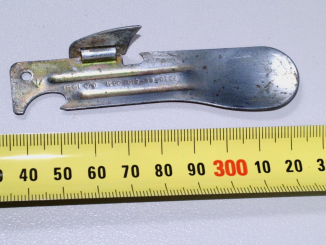


Leave a Reply